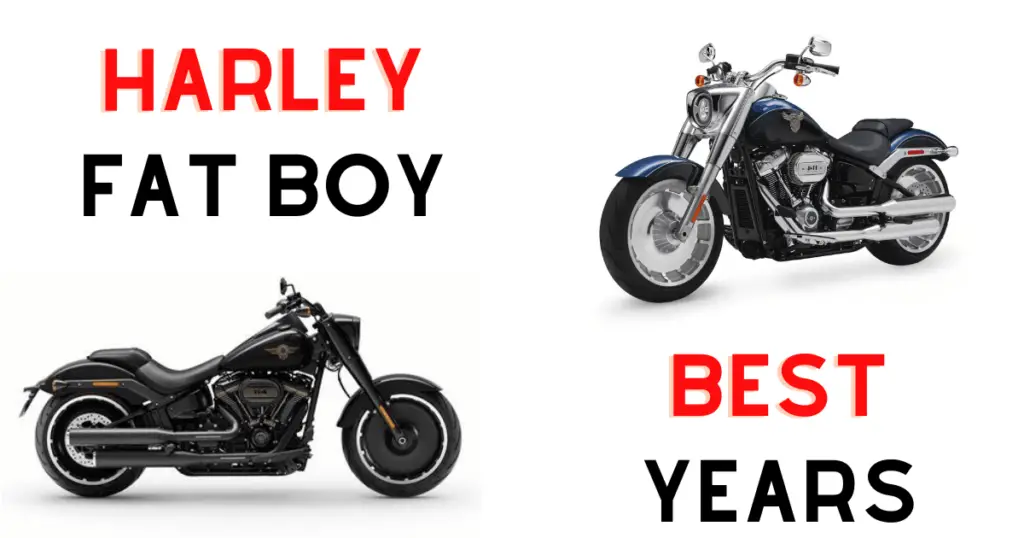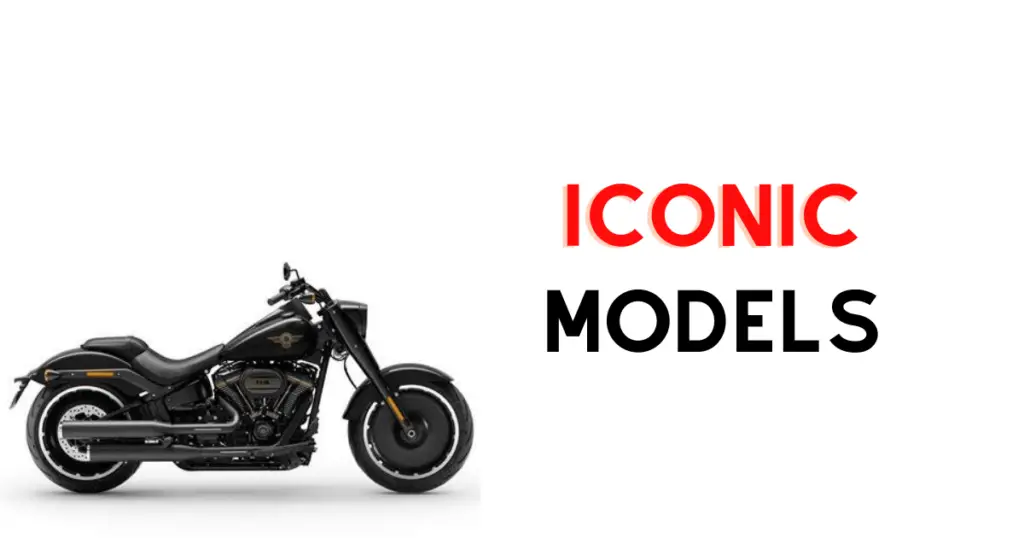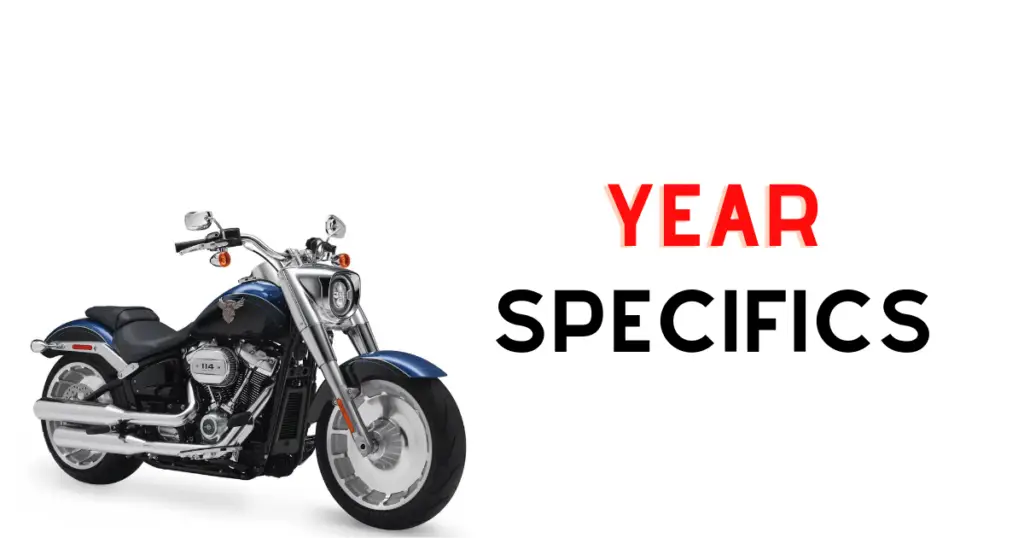The Harley-Davidson Fat Boy has been an emblematic fixture in the motorcycle world since its inception in 1990, earning a reputation as a classic symbol of American road culture. Known for its distinctive design and substantial presence on the road, the Fat Boy has garnered the attention of riding enthusiasts and casual motorcyclists alike. Throughout its history, certain model years have stood out for their performance enhancements, style updates, and technological improvements.
Navigating the rich history of the Fat Boy reveals the evolution of the motorcycle, which began with the original 1340cc Evolution engines and later transitioned to the 1450-1690cc Twin Cam engines in the early 2000s. More recently, the introduction of the Milwaukee-Eight engines in the 2018 models has signaled another significant leap in the bike’s development. Among the many iterations, select years have been highlighted by riders and critics for bringing the Fat Boy to its peak in terms of reliability, design, and engine performance.
The motorcycle’s journey has not been without its low points; certain models experienced reliability issues that marred their standing within the community. Nevertheless, the Harley-Davidson Fat Boy continues to be celebrated for its successful models, which delivered on the brand’s promise of power and prestige. This enduring allure makes determining the best year for the Fat Boy an intriguing and nuanced discussion for aficionados and prospective buyers.
Related: Harley Fat Boy Problems and Most Affected Years (Guide)
Design Evolution and Iconic Models

As the Harley-Davidson Fat Boy transitioned through the years, it has embraced design innovations while maintaining its iconic status. The model has seen various changes in styling, appearance, and performance since its inception in 1990, leading it to become a symbol of American motorcycle culture.
Styling and Appearance
When the Harley-Davidson Fat Boy was first introduced in 1990, it featured a bold design with solid disc wheels, a wide frame, and a robust presence that would become synonymous with the Fat Boy name. In the early years, the motorcycle showcased traditional paint schemes and classic styling, capturing the essence of the Harley-Davidson brand. By the year 2000, designers had integrated edgier elements, and the Fat Boy had begun adopting a more modern look without losing its fundamental character.
Historical Impact and Milestones
The Fat Boy achieved a significant milestone when it was chosen as the motorcycle ridden by Arnold Schwarzenegger in the 1991 blockbuster Terminator 2: Judgment Day. This exposure cemented the Fat Boy’s status in pop culture. Marking its ten-year anniversary, the 1999 model was one of the last to house the respected Evolution engine before Harley-Davidson transitioned to the Twin Cam engines in the following year.
Iconic Models Over the Years

- 1990: The inaugural model that set the standard for all future Fat Boys with its distinctive design and solid wheels.
- 1999: Acknowledged for its classic Evo motor, signaling the end of an era for this particular engine in the Fat Boy lineup.
- 2000: Represented the introduction of the Twin Cam engines, offering a new era of power and reliability as well as an evolution in the motorcycle’s appearance.
Each of these years marks a pivotal point in the design evolution of the Fat Boy, demonstrating Harley-Davidson’s commitment to improving performance while preserving the bike’s classic allure.
Performance and Engineering
The Harley Fatboy series stands out with robust engine specifications and finely-tuned handling and suspension. These integral features define the riding experience, offering a blend of power and performance tailored for cruising.
Engine Specifications
The Fatboy models are most renowned for their signature V-twin engines. Notably, the 2018 Fatboy introduced the powerful Milwaukee-Eight 107 or 114 engine, which elevated the power output significantly. Users can expect a responsive and smooth riding experience with ample torque. The Milwaukee-Eight engines showcase:
- Displacement: 107 or 114 cubic inches
- Torque: Robust figures that contribute to a powerful low-end performance
- Cooling: Precision oil or liquid cooling to enhance performance and longevity
Earlier, the 2005 Fatboy featured the Twin Cam 88B™ engine, a counter-balanced version of the Twin Cam 88, which was engineered for reduced vibrations and a smoother ride.
Handling and Suspension
Handling has always been a pivotal aspect of the Fatboy’s design. With a focus on stability and comfort, the suspension systems complement the powerful engine for an optimal riding experience.
Front suspension on these bikes tends to be telescopic forks, which provide solid control and damping. Rear suspension, especially in newer models, comes with features like:
- ABS: Available in more recent year models for enhanced safety and precision braking
- Adjustable Suspension: Some models offer rear suspension adjustments to cater to different rider preferences and loads
The transmission works in harmony with the engine and suspension, delivering smooth shifts and maintaining the bike’s momentum. Collectively, they uphold the Fatboy’s reputation for reliable and enjoyable performance on the road.
Rider Experience
When evaluating the Harley Fatboy, particular emphasis is placed on comfort and ergonomics as well as safety and reliability, as these aspects greatly influence a rider’s overall experience.
Comfort and Ergonomics
Harley-Davidson Fatboys are renowned for their comfortable ride positioning, providing riders with a relaxed seating posture tailored for lengthy rides. They feature ergonomic handlebars and footboards that enhance control and reduce rider fatigue. Seat height plays a crucial role in the rider’s comfort, especially when at rest or maneuvering at low speeds, and the Fatboy’s design caters well to this, offering an accessible seat height that suits a wide range of riders.
- Seat Height: Designed lower to the ground to accommodate riders of varying statures.
- Handlebar: Positioned to offer a natural grip, reducing strain on the rider’s arms and shoulders.
- Footboards: Allow for restful leg placement, important for long-distance comfort.
Safety and Reliability
Safety on a Fatboy is underpinned by its headlight providing ample road illumination, while the motorcycle’s weight contributes to a stable ride. Reliability issues have been recorded in specific model years, but generally, the Fatboy is considered reliable. It is, however, important for potential owners to be aware of common reliability concerns to ensure they are addressed proactively.
- Headlight: Projects sufficient brightness for clear night riding.
- Weight: Heft adds to stability but may affect low-speed handling for some riders.
- Reliability Issues: Awareness of common concerns is critical for maintenance.
Bold claims of year-specific excellence should be underpinned by concrete data, such as user testimonials, service records, and recall rates to present an honest picture of safety and reliability. It depends on the year and maintenance how each Fatboy performs in the long run.
Ownership and Maintenance
Owning a Harley Fatboy provides a blend of classic style and modern performance, but it comes with certain maintenance and customization demands. Knowledge of these aspects is key to ensuring the bike retains its value and runs smoothly.
Customization and Accessories
Owners often look to customize their Fatboy for personalization and improvement. Common accessories that can enhance both the aesthetics and performance include:
- Exhaust systems: to improve sound and power.
- Seats: for added comfort and style.
- Handlebars: to alter riding posture to the rider’s preference.
- Wheels: upgrading for a custom look or better performance.
- Lighting: LED conversions offer better visibility.
Maintaining the value of a Fatboy partly hinges on the choice of accessories, with genuine Harley-Davidson parts often preferred to maintain authenticity.
Maintenance and Common Issues
Regular maintenance is crucial for the Harley Fatboy’s longevity and reliability. Here’s a succinct guide:
- Service Intervals: Every 5,000 miles for optimal performance.
- Routine Maintenance Costs: Average annual cost can be around $1,800.
Common issues include:
- Oil leaks: Check and replace seals as needed.
- Electrical problems: Inspect wiring and connections regularly.
- Fuel injection system: Maintain for performance and engine health.
Owners should note that some models may experience specific issues, such as transmission problems in the 2007 Fatboy. Regular maintenance and addressing issues promptly are vital in preserving the motorcycle’s performance and value.
Best Year Harley Fatboy Reviews and Recommendations

When considering the Harley Davidson Fatboy, certain years stand out due to significant improvements and rider endorsements. This section examines the most acclaimed years of the Fatboy and gathers insights from consumer experiences.
Evaluating the Best Years for Harley Fatboy
The 2018 Harley Davidson Fatboy represents a pinnacle year due to the introduction of the Milwaukee-Eight engine. This engine provided improved power and smoother performance, addressing demands for a more refined riding experience. Spec-wise, the 2018 model also boasts advancements in fuel capacity and mileage efficiency.
In terms of earlier models, the 1991 Fatboy is often highlighted for its enduring quality and the fact that it incorporated various enhancements over the initial 1990 release. These motorcycles have become revered for not only their classic aesthetic but also for their robust performance and reliability over time.
Consumer Preferences and Testimonials
Riders often express a preference for models that combine both performance and aesthetic appeal. The 2018 Fatboy receives frequent praise, particularly due to its engine upgrade and design revisions. Testimonials underscore the motorcycle’s mpg efficiency and overall riding enjoyment, which appear to align with the consumer’s expectations for a modern cruiser.
Older models, like the 1991 version, still resonate with enthusiasts who value the Fatboy’s heritage. Discussions in forums and reviews often reflect a respect for the improvements made during these early years and a satisfaction with the motorcycle’s specs and mileage performance.